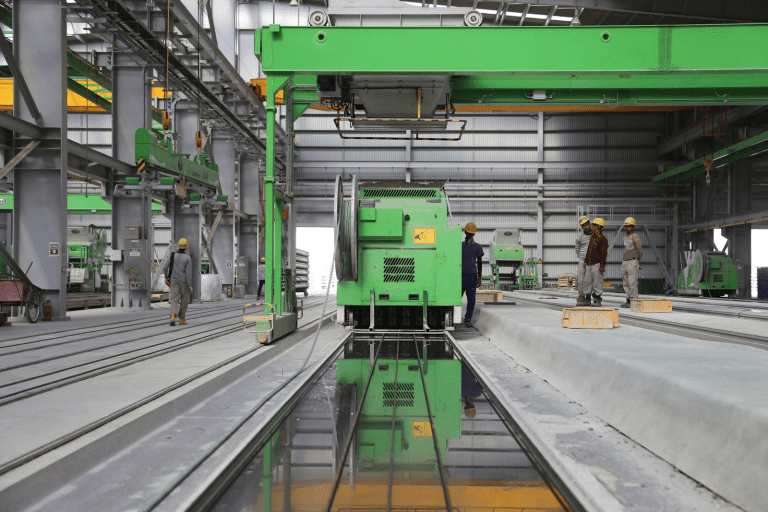Manufacturing businesses are always looking to increase efficiency and reduce waste. The modern manufacturing unit mostly comprises machinery, robotics, computers, and humans who all work in tandem to deliver the final product. The machines are primarily used to reduce the element of human involvement in the manufacturing process to increase its efficiency. But despite that, when it comes to making crucial decisions while operating these devices, the human mind is used, and that can lead to potential errors. This is where Computer Numerical Control (CNC) machines come in. CNC machines eliminate the need for human intervention, are incredibly accurate, and help avoid accidents. CNC machines have a high demand in the manufacturing industry, and the market of CNC machining is expected to reach USD 100.86 billion by 2025. What are CNC machines and what is CNC milling CNC stands for Computer Numerical Control, and as the name suggests, a CNC machine is controlled through a numerical computer program. A 3-D design of the desired product is created with the help of a Computer-aided design. This design is then converted into a manufactured physical product with the help of computer-aided manufacturing. These two processes complete the CNC machining. There are various types of CNC machines, including winding machines, lathe machines, welding machines, milling machines, grinding units, and lasers. The market shows an increasing trend of opting for CNC machines that are compact sized, come with automatic tool changers, and possess multi-axis machining technology. CNC milling falls into this multi-functional machine category, and right now is the second biggest segment, behind lathe machines. The division of CNC milling machine is further expected to grow, as it provides the benefit of reducing the operational costs. Applications of CNC parts CNC parts machining has gained popularity globally because of their higher tolerances and unmatched repeatability. This rise in popularity is because, unlike a human operator, the performance and precision of a CNC machine do not drop with time due to external factors, and more parts are produced in the same time frame. This makes rapid prototyping very easy and eliminates the need for breaks so that the plant can keep operating round the clock. CNC parts are used in many sectors ranging from prototypes to industrial products. Because of their ability to create extremely complex geometries, and their high precision, CNC parts are prevalent in industries like the aerospace industry. Advantages of CNC Automation, and how they are improving the manufacturing industry CNC milling presents a large number of benefits when compared to the traditional human operator reliant machines. Some of these advantages are listed below: Increased efficiency CNC machines can significantly reduce the wastage per piece due to their high precision. When the material wastage from production is reduced, the cost of production is also reduced. This reduction increases the efficiency of the manufacturing plant. CNC milling also increases efficiency because these machines significantly reduce human error. Since CNC milling does not require direct human intervention, it means that they can work at any time of the day, without stopping or taking breaks, especially round the clock. This way, CNC milling allows the manufacturing unit to remain open and function round the clock. Increased safety When the instructions for the production of parts are programmed into the machine, it then acts on its own without the need of an operator or individual intervention. This property of CNC milling makes these machines ideal for the manufacturing processes that involve substances that are toxic or corrosive, including incredibly high temperatures or any other factors that can pose potentially dangerous scenarios for the workers. In a way, CNC milling increases the safety of the workers in the manufacturing industry. Increased consistency and capacity CNC automation means that the machines will run 24/7 and 365 days if you want to with the end product that is the same, piece after piece. The only time the machine will stop is when it needs maintenance or repairs. This is possible because no human intervention is required, and the precision stays the same, so does the consistency. Since the machines run for more extended periods and can handle more parts, this increases the capacity of the manufacturing plant. Sustainability CNC milling reduces the carbon footprint of the manufacturing plant, thus playing their role in making the earth a more sustainable planet. This is achieved as a result of various factors. Firstly, CNC milling reduces the wastage in the manufacturing process. Secondly, since these machines are more efficient, and there are fewer chances of errors in production, fewer materials are thrown away. Thirdly, these machines do not require additional parts like sanders or drills, as the main body of the device includes everything. Prototype machining Prototyping in manufacturing can prove to be very expensive and time-consuming. Thus many businesses skip this part, although it is essential as it helps to minimize mistakes and help understand the product in a better way. CNC milling makes prototyping less expensive, more accessible and affordable to attain. To have a better idea of the steps to come in the process, the manufacturers can create mock-ups through CNC milling at an affordable price. CNC milling and the new technologies associated with it also allow the manufacturers to develop designs that are more complex and comprehensive. Reduced labor costs The actual hard and complicated work relating to the manufacturing is done solely by the machines that include drilling, cutting, or stamping. A single human operator that does not necessarily have to be high-skilled can operate several CNC machines. Thus labor costs are significantly reduced. Conclusion CNC milling provides high efficiency, excellent precision, tolerance, and quick processing. CNC parts can be made out of metal, wood, and various other materials, and this makes CNC milling the perfect option for sectors that require customized components. Therefore, regardless of whether you are currently using manual machines and looking to upgrade or looking to use the process of machining for the first time, CNC milling is the perfect tool that







